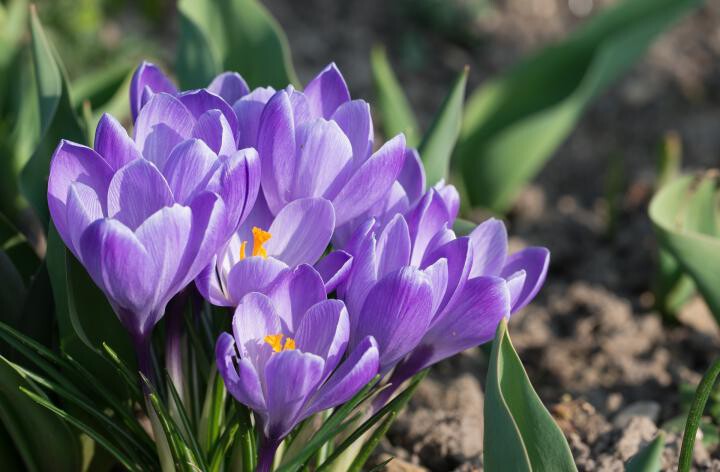In the language of flowers, crocus means cheerfulness.
And all the woods are alive with the murmur and sound of Spring,
And the rose-bud breaks into pink on the climbing briar,
And the crocus-bed is a quivering moon of fire
Girdled round with the belt of an amethyst ring.
–Oscar Wilde

| Botanical Name | Crocus |
|---|---|
| Plant Type | Bulb |
| Sun Exposure | Full Sun, Part Sun |
| Soil Type | Any, Loamy |
| Soil pH | |
| Bloom Time | Spring, Winter |
| Flower Color | Blue, Orange, Pink, Purple, White, Yellow |
| Hardiness Zones | 3, 4, 5, 6, 7, 8 |

HOW TO PLANT CROCUSES
- Plant crocus corms 3 to 4 inches deep (with the pointy end up). After planting, water well.
- Plant bulbs in groups or clusters rather than spacing them in a single line along a walkway or border. Single flowers get lost in the landscape. Plant a few inches apart, and plant in groups of 10 or more.
- Consider planting crocuses in lawns and meadows where they can form carpets, or mass them in the front of flower beds along the edge.
- Plant taller spring-flowering bulbs and shrubs behind the early bulbs for color contrast.
HOW TO CARE FOR CROCUSES
- Apply a balanced fertilizer in early autumn if your spring is short and the days heat up fast; or, apply fertilizer after bulbs flower in late winter if your spring is long and temperate. The crocuses will have a chance to use the extra nutrients to produce bigger carbohydrate stores.
- Through the autumn, keep crocus beds watered if weather gets dry, but do not waterlog the soil. Cover the beds with mulch before the winter.
- In late February, remove mulches from snowdrops and crocuses so the shoots can come through.
- In February and March, keep plastic milk jugs or other coverings on hand to protect the flowers of crocuses and other early bloomers against the return of severe weather.
- If you have crocuses growing in your lawn in mid-Spring, don’t mow until their leaves have died down.